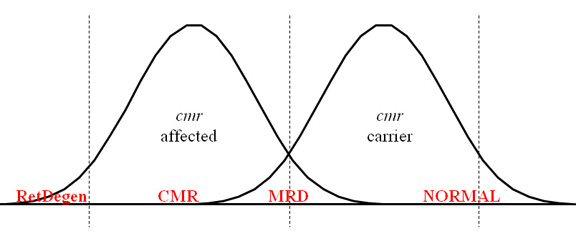Figure 4. A proposed working hypothesis for canine multifocal retinopathy (cmr) genotype–phenotype correlation. cmr-affected animals typically develop multifocal lesions, but generalized retinal degeneration (RetDegen) may occasionally be
seen in a small number of older dogs as a consequence of the disease. In short, only one animal affected with canine multifocal
retinopathy 3 (cmr3) was observed in the current study with retinal degeneration; we cannot exclude that this case may have resulted from a mutation
at a non-cmr3 locus because related dogs, normal or carrier for the cmr3 mutations, were also diagnosed with RetDegen. However, similar consequences have been observed for cmr1 and cmr2 (see discussion for details). Few or no animals heterozygous for cmr3 are expected to exhibit clinical disease, while it cannot be excluded at this point that more susceptible individuals may
present a mild disease equivalent to multifocal retinal dysplasia (MRD). The later phenotype could also be observed in some
homozygous-affected dogs, although it is not clear whether this is a consequence of incorrectly interpreted fundus appearance
or truly signifies the potential of the phenotypic spectrum related to cmr. Follow-up long-term studies will further elucidate the validity of the working model.

 Figure 4 of
Zangerl, Mol Vis 2010; 16:2791-2804.
Figure 4 of
Zangerl, Mol Vis 2010; 16:2791-2804.  Figure 4 of
Zangerl, Mol Vis 2010; 16:2791-2804.
Figure 4 of
Zangerl, Mol Vis 2010; 16:2791-2804. 